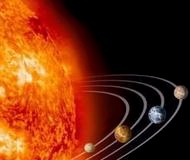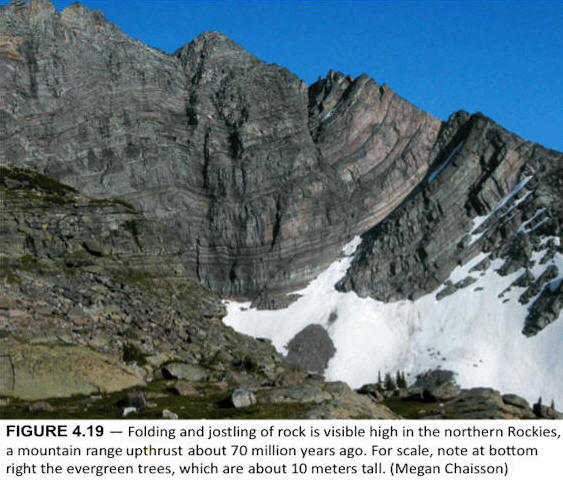
|
|||
| Contents | Prev | Next | |
![]()
13. How Are Mountains Formed?
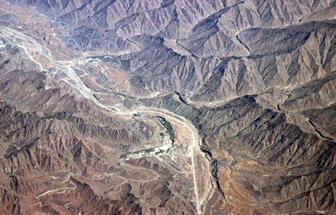
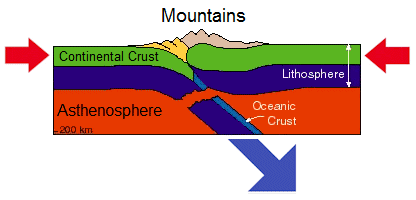
One of the greatest mysteries that are found on Earth is mountains. Many theories to explain mountain formation have been put forward over the last 100 years or so, but it doesn't seem that these theories are convincing; so new theories for mountain formation are still showing up from time to time.
Mountain formation, according to the tectonic theory is represented sometimes by two arrows opposite to each other and a single mountain block in between, to mean that the arrows or plates pushed the mountain block up. And based on this idea, it is thought that mountains are collections of rocks put together on top of the continental crust, and they are completely isolated from the earth's mantle that is made of basalt rock.
The Earth isn't the only planet that has mountains; all the rocky planets have mountains too.
There is no water on the moon; and it does not have a continental crust as the earth does, but it has mountains that are exactly the same as mountains on earth (see the picture below). There on the moon, the mountains are "connected" directly to the basalt layer that is equivalent to the sea floor on Earth. And this shows that mountains are not pushed by the continental crust, because there is no continental crust on the moon. In other words, mountain rocks were dropped from the sky, in trenches, and then pushed up by a rising magma from the mantle.
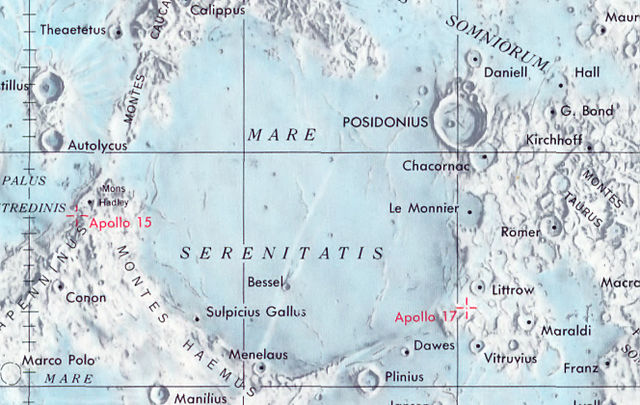
hq.nasa.gov
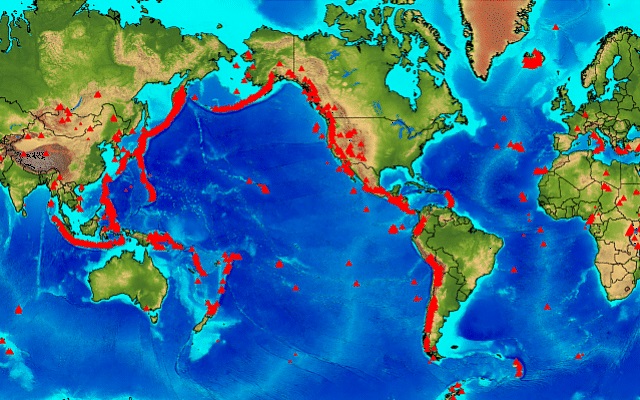
The similar area, the ring of fire, on Earth is covered in water, but if the water and sand can be removed around these mountains, we will find them connected directly to the lowland; no land barrier in between -- Basically, there is no major difference between the Earth and the other inner planets except water. And of course, the tectonic plates have nothing to do with the formation of mountains. The water on Earth is the factor that has played the major role that changed the Earth's surface features. And this could not have happened before the addition of rocks that created mountains and lowlands 200 million years ago.
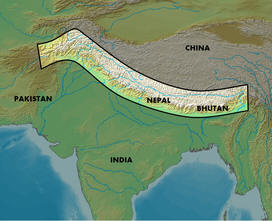
By looking at the way these mountains are laid, it seems that they were built along cracks in the continental crust, in a very similar manner as the Atlantic Ocean and other seas.
When comparing the lowlands and mountains of Earth with the lowlands and mountains of the other inner planets, we can see that the difference between cracks where mountains were built, and cracks where seas were created, is the timing. The cracks of mountains formed trenches in the continental crust at the time when the earth was receiving rocks from space, just like mountains on the other inner planets, whereas the cracks in ocean floor were stretched after water filled ocean basins.
At the time when rocks were falling from space, they fell either in trenches or on ocean floor, because of the high magnetic field in these places. The ionization of gases that was caused by gamma rays from the dying second sun created the magnetic field.
QUOTE: "Motion of an ionized gas will
produce a magnetic field."
stars.astro.illinois.edu
Since the falling rocks contain iron, and also magnetism, they were attracted to the nearest magnetic field.
The base layer of ocean floor is much larger than the base layer of trenches, so it took ocean floor much more time to build thickness and solidify.
Because the base layer of trenches is narrower, it solidified much faster.
Any rock that fell on ocean floor has broken through or melted, whereas rocks that fell in trenches have stacked up.
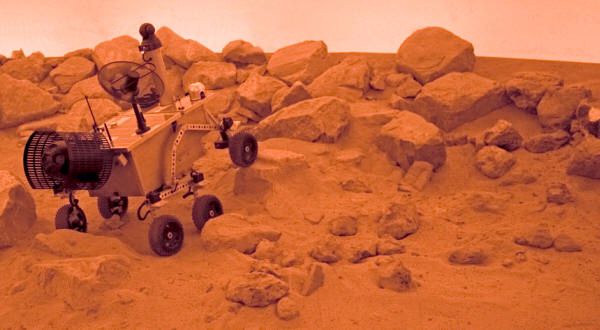
The picture of Mars above shows that some of the fallen rocks were stacking up together. The reason for these rocks to come together and then stack up is that they contain magnetism. Each rock was attracted by the one preceding it while they were coming down. On Earth, all rocky mountains have magnetism at various levels. It is very likely magnetism in mountain rocks was much stronger in the past than it is today.
The fallen rocks were not breaking because the iron core of Earth still hasn't developed yet; so the Earth gravity was very low; the rocks fall in slow motion.
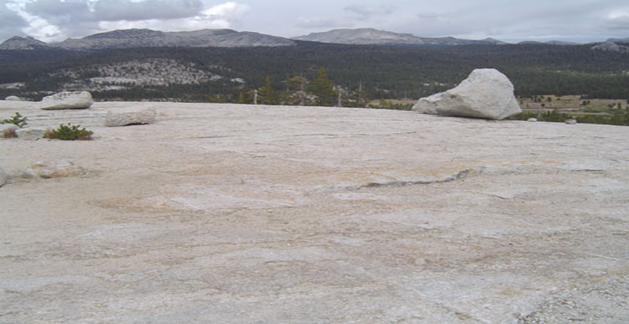
The dome in the picture above seems to be an uplifted area created by a rising magma. At a later time, when the surface was raised to a very high altitude, far away from the mantle heat, new rocks have fallen on it from the sky. Even though the rocks on this dome are very few, but they show that the Earth gravity was very low, otherwise the rocks would have broken.
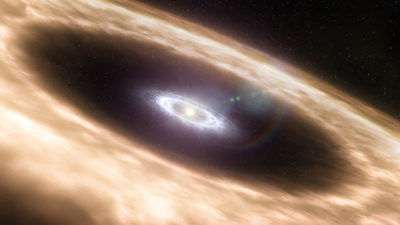
The presence of Earth materials, such as sand and mud, with mountain rocks indicates that they were mixed and heated together with moisture, but not heated to the melting point. This mixture may have been done in different ways. One way is by wind, like the picture of Mars above, but inside trenches. The wind blows on the surface of Earth and causes sand and dust from the top of the surface to fall inside trenches and between rocks. Another way is rain; the rain falls and drives sand and mud into trenches. Or, what looks like earth materials was actually dust came together with the rocks from the debris disk of the second sun. Or, a combination of all of the above mixed together.
Because mountains have their roots connected directly to the mantle, most volcanoes are found mainly in mountainous areas.
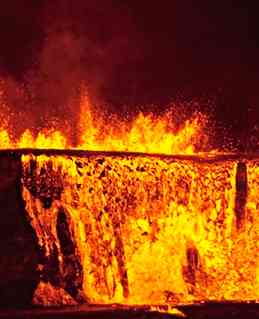
In the section about the Permian-Triassic extinction event, we talked about the huge rocks, that have fallen from the sky during the time of the extinction. This indicates that the falling rocks have something in common with the actual cause of the Great Dying. And since there were no rocky mountains on Earth before 200 million years, these huge rocks in Hungary, China and Japan add evidence to support that the rocks that make up mountains have actually come from space, at the time of the extinction.
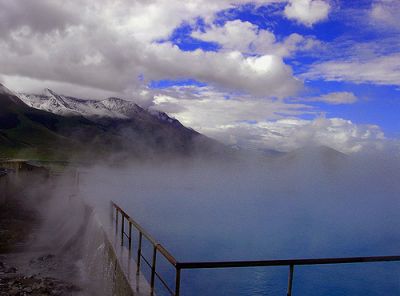
Most hot springs around the world are found in mountainous areas. The spring shown in the picture to the right is located at a very high altitude, about 4.5 km above sea level.
The heat that makes these springs hot is coming from the mantle. In fact, it looks like the water itself is coming from the mantle too; the very hot water vapor, H2O, that is coming from the mantle, which is the same as the water vapor that is produced by volcanoes, condenses into water liquid after making contact with colder mountain rocks. And this water liquid makes hot springs.
Hot springs that are found in volcanic areas are extremely hot, with temperatures at, or near, the boiling point. The presence of hot springs and volcanoes side-by-side indicates that they are coming from the same source, the earth's mantle.
It is very likely that steam like the one coming from hot springs existed in the past in all areas where mountains are found today. This hot steam, plus dust, sand and mud, formed the strong cement that glued mountain rocks.
The apparent reason for water vapor that makes hot springs to exist until this day is unsealed spaces in mountain structure.

Simplified block diagram for mountain formation
Based on what we have seen so far, it is very likely that mountains formed in a way similar to the simplified block diagram above -- The rocks that have fallen first inside a trench were fully melted, forming a near flat surface (A). Magma from the mantle raised the melted surface up. The rocks that followed stacked up together (B), but not melted because of the increased distance between the new rocks and the mantle. They formed a mountain hill. The rising magma kept pushing the whole block up (C).
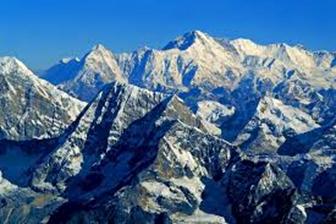 Since
the amounts of fallen rocks are not the same all the time, mountain hills are
not of the same height.
Since
the amounts of fallen rocks are not the same all the time, mountain hills are
not of the same height.
Not only the height is different, but also the directions of these hills are not the same. Some hills are going, for example, east-west, others north-south, and so on.
While the mountains were taking shape inside their trenches, high pressure magma from the earth's mantle kept pushing these mountains up, at various rates.. Some mountains were pushed up very fast, others much slower, and some others may still under ground, but covered with sand.. The different rising rates are due to the way the earth is adjusting itself with the new situation.
In some places, scratches on the surface of mountain hills are found (like the picture above). They are called fold-mountains. They look as they have been squeezed before they were pushed up. This could happen if their trenches were narrowed after mountain hills have already taken shape and solidified while they were below the surface of Earth.
Narrowing of trenches could happen if parts of the continental crust were pushed by ocean water.
It is written under the picture above that these mountains were raised about 70 million years ago. This shows that they have remained below the surface of the earth for a very long time, since the time of the formation of ocean floor until they were pushed up 70 million years ago.
![]()
| The full report in a single page | ||
| Contents | Prev | Next |
